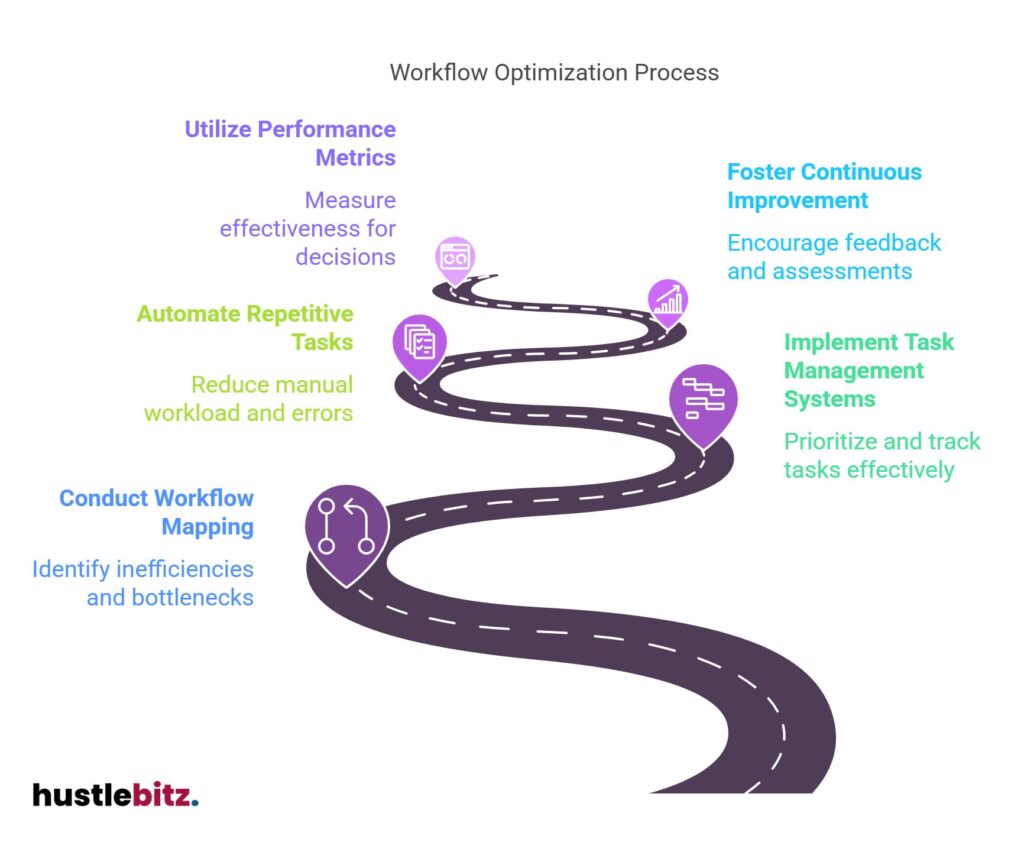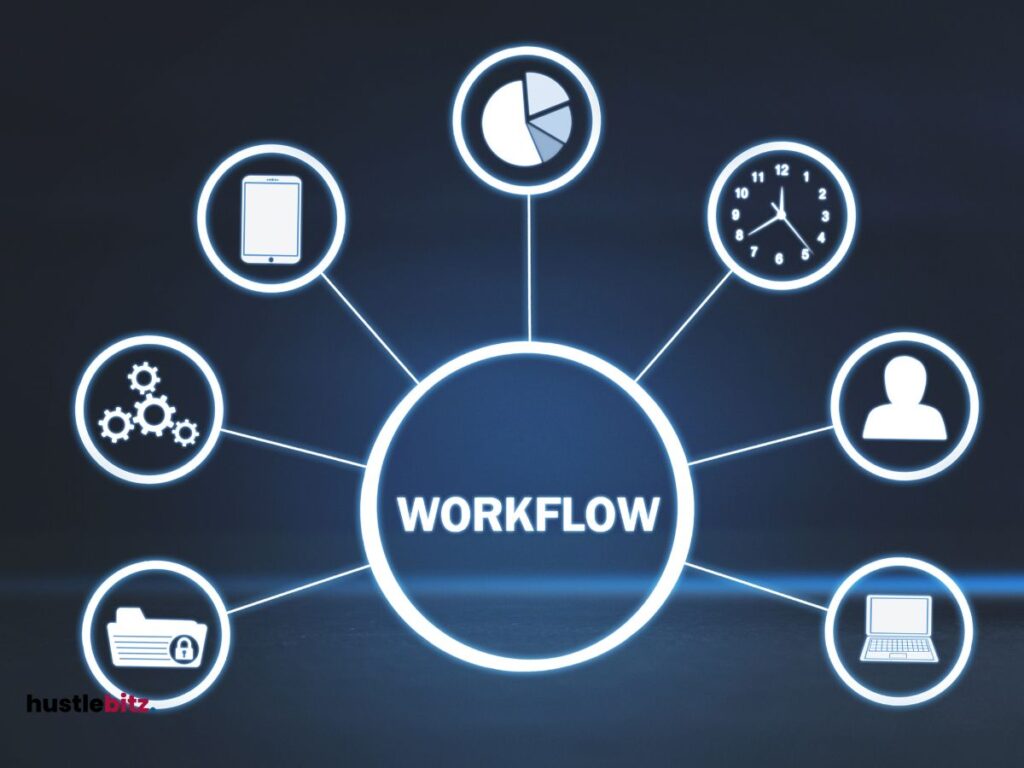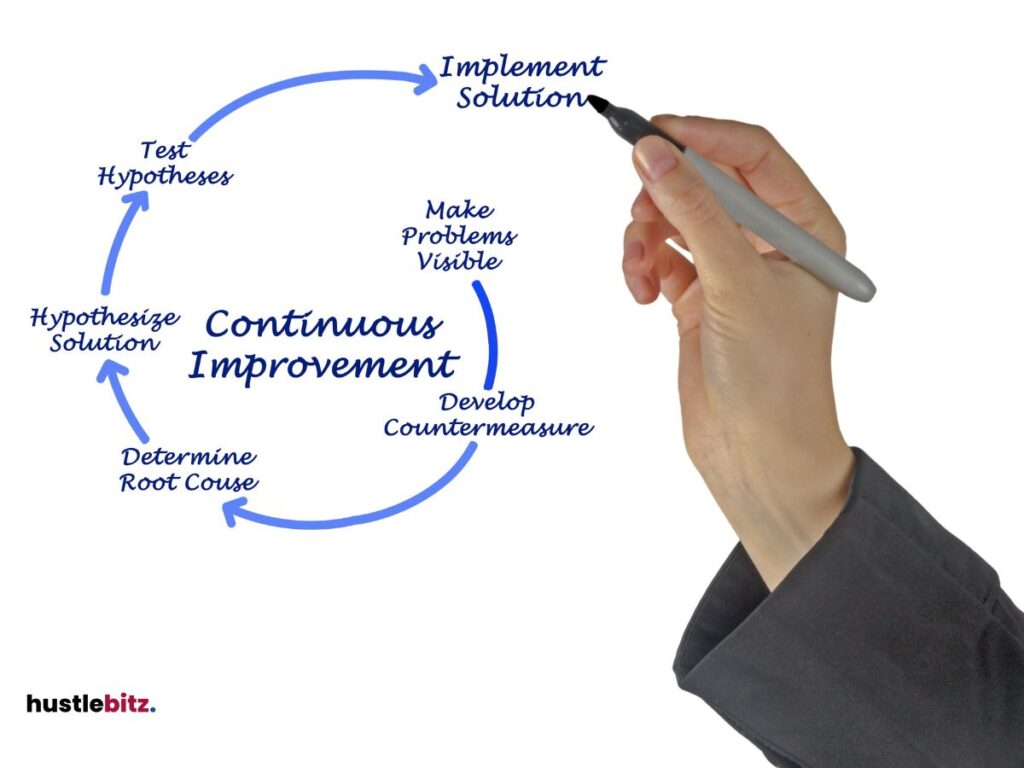Workflow optimization is critical for improving efficiency and productivity in any organization. By systematically analyzing processes, tasks can be streamlined and bottlenecks identified. Tools such as task management systems and project tracking software enhance transparency and collaboration among teams. Automating repetitive activities reduces manual workload, allowing focus on strategic priorities. A culture of continuous improvement ensures processes are regularly refined, leveraging employee feedback and innovative ideas. Emphasizing these strategies fosters a more agile and responsive work environment, ultimately enhancing output. As you explore these concepts, further insights into effective implementation await your discovery.
Key Takeaways
- Conduct workflow mapping to identify inefficiencies and bottlenecks in your processes for targeted improvements.
- Implement task management systems to prioritize and track tasks effectively, ensuring critical activities are addressed first.
- Automate repetitive tasks to reduce manual workload, minimize errors, and enhance overall operational efficiency.
- Foster a culture of continuous improvement by encouraging employee feedback and regular process assessments.
- Utilize performance metrics to measure effectiveness, enabling data-driven decisions for strategic workflow enhancements.

Understanding Workflow Optimization
Workflow optimization refers to the systematic analysis and enhancement of processes to improve efficiency, reduce waste, and increase productivity within an organization. Central to this endeavor is workflow mapping, a technique that visually represents processes to identify areas for improvement.
By employing task prioritization, organizations can ensure that critical activities are addressed first, enabling teams to allocate resources efficiently and effectively. Resource allocation plays a crucial role in optimizing workflows, as it ensures that the right skills and tools are available when needed.
Team collaboration is enhanced through clear communication channels and shared goals, fostering a culture of cooperation that drives productivity. Process standardization helps mitigate variability, allowing for consistent performance and easier training of new team members.
To measure the effectiveness of workflow optimization efforts, organizations should utilize performance metrics that provide insight into process efficiency and output quality. Implementing feedback loops enables teams to learn from their experiences, continually refining processes based on real-time data.
Visual management tools can aid in tracking progress and identifying discrepancies, ensuring that stakeholders remain informed and engaged throughout the optimization journey.
Identifying Bottlenecks in Processes
Identifying bottlenecks in processes is essential for organizations aiming to streamline operations and enhance overall efficiency. Bottlenecks can severely hinder productivity, leading to delays and increased costs. Through effective bottleneck analysis and process mapping, organizations can pinpoint areas where tasks are stalling and implement strategies for improvement.
One effective method is to utilize workflow visualization tools, which help in identifying inefficiencies by mapping out current processes. These tools allow teams to visualize how tasks flow and where delays occur, facilitating better task delegation and resource allocation. By focusing on performance metrics, organizations can measure the impact of identified bottlenecks, enabling data-driven decisions for process improvements.
To foster team collaboration and ensure continuous improvement, establishing feedback loops is critical. This encourages open communication about challenges faced during task execution, thus aiding in time management and priority setting. By addressing bottlenecks collaboratively, teams can optimize workflows more effectively.
Here’s a simple table to summarize key aspects of identifying bottlenecks:
| Key Element | Description | Benefits |
| Bottleneck Analysis | Assessing points of delay in a process | Improved efficiency |
| Process Mapping | Visual representation of workflows | Enhanced clarity |
| Task Delegation | Assigning specific tasks to team members | Better resource allocation |
Analyzing Your Current Workflow

How effectively does your current workflow align with organizational goals and operational efficiency?
Analyzing your existing workflow is essential in identifying areas for improvement and ensuring that your team operates at peak performance. Begin with workflow mapping, which allows you to visualize processes and understand how tasks flow through your organization. This process visualization aids in recognizing redundancies and inefficiencies that may be hindering productivity.
Moreover, effective task prioritization is crucial for optimizing time management. By clearly defining which tasks are most critical, teams can focus their efforts on what truly drives project alignment with organizational objectives. Role clarification also plays a vital role; ensuring that each team member understands their responsibilities fosters better team collaboration and accountability.
Incorporating performance metrics into your analysis will provide invaluable insights into how well your workflows are functioning. These metrics can highlight areas for resource allocation, ensuring that your team is equipped with the necessary tools to succeed. Additionally, implementing feedback loops within your processes encourages continuous improvement and can help identify potential issues before they escalate.
Ultimately, a thorough analysis of your current workflow is not just about identifying problems; it’s about creating a cohesive strategy that enhances efficiency and aligns with your organization’s goals.
Tools for Streamlining Tasks

To enhance productivity and efficiency, leveraging the right tools for streamlining tasks is essential for any organization aiming to optimize its operations.
The integration of task management systems allows teams to assign, track, and prioritize tasks effectively, ensuring that critical responsibilities are addressed in a timely manner. Utilizing project tracking software can further enhance this process by providing real-time visibility into project status and milestones, facilitating better decision-making.
Collaboration tools play a crucial role in fostering team communication, enabling members to share updates and feedback seamlessly. These platforms support digital organization by centralizing information, reducing the time spent searching for documents, and enhancing overall workflow efficiency.
Additionally, productivity apps can aid in time management, helping individuals allocate their hours more effectively and avoid burnout.
Workflow software can streamline processes through intuitive interfaces that promote task prioritization and process mapping. By visualizing workflows, organizations can identify bottlenecks and areas for improvement, ensuring that resources are utilized optimally.
Moreover, integrating these tools creates a cohesive ecosystem that aligns team members towards common objectives, improving engagement and accountability.
Automating Repetitive Activities

Automating repetitive activities can significantly reduce manual workload and increase overall efficiency within an organization. By implementing task automation, businesses can enhance process efficiency, minimize time spent on mundane tasks, and redirect valuable resources toward more strategic initiatives. This not only leads to substantial time savings but also fosters a culture of productivity enhancement.
Effective software integration is vital for streamlining these automated processes. It ensures seamless communication between different applications, thus improving resource management. Moreover, automated systems contribute to error reduction by minimizing human involvement in routine tasks, leading to greater workflow consistency.
The following table illustrates the benefits of automating repetitive tasks:
| Benefit | Description | Impact on Organization |
| Time Savings | Reduced time spent on repetitive tasks | More time for strategic initiatives |
| Error Reduction | Fewer mistakes due to automated processes | Increased accuracy and reliability |
| Workflow Consistency | Standardized processes across departments | Improved collaboration and efficiency |
| Operational Agility | Quick adaptation to changing workloads | Enhanced responsiveness to market needs |
Continuous Improvement Strategies

Building on the foundation of automation, continuous improvement strategies focus on fostering a culture of ongoing enhancement and efficiency within organizational workflows.
By implementing kaizen principles, organizations can create an environment where small, incremental changes lead to significant improvements over time. Lean thinking further complements this approach by emphasizing the elimination of waste and optimizing the value stream, ensuring that every step in a process adds value to the final output.
Process mapping is an essential tool in identifying bottlenecks and inefficiencies, allowing teams to visualize workflows and pinpoint the root cause of issues. Performance metrics play a crucial role in assessing the effectiveness of these processes, enabling organizations to track progress and make data-driven decisions.
Employee engagement is vital for successful continuous improvement, as it empowers team members to contribute their insights and perspectives. Establishing feedback loops encourages open communication and promotes a culture of learning, where teams can adapt and refine their processes through iterative cycles.
Cross-functional teams can enhance these strategies by bringing together diverse skill sets and perspectives, fostering collaboration and innovation. By embracing continuous improvement, organizations not only enhance their workflows but also cultivate a proactive mindset that drives sustained growth and adaptability in an ever-changing environment.
Through these collective efforts, businesses can achieve remarkable levels of efficiency, ultimately leading to better output and enhanced overall performance.
Final Thoughts
Workflow optimization is not just about improving efficiency; it’s about creating a more agile and responsive work environment that supports long-term success. By systematically analyzing and streamlining tasks, organizations can eliminate bottlenecks, reduce manual workload, and enhance collaboration across teams. The integration of automation and continuous improvement strategies further drives operational excellence, allowing for sustained growth and adaptability in a dynamic business landscape. Ultimately, embracing these principles enables businesses to not only boost productivity but also achieve higher quality outcomes and a more satisfied, engaged workforce. By committing to regular assessments and fostering a culture of innovation, organizations can ensure that their workflows remain aligned with their strategic goals, leading to better output and overall success.




